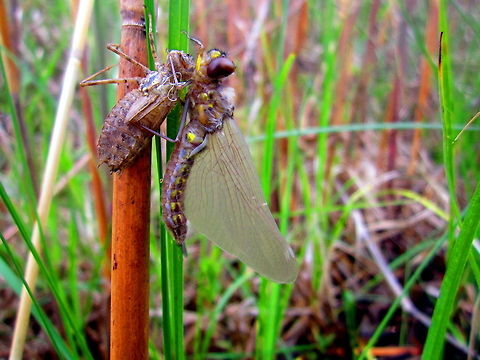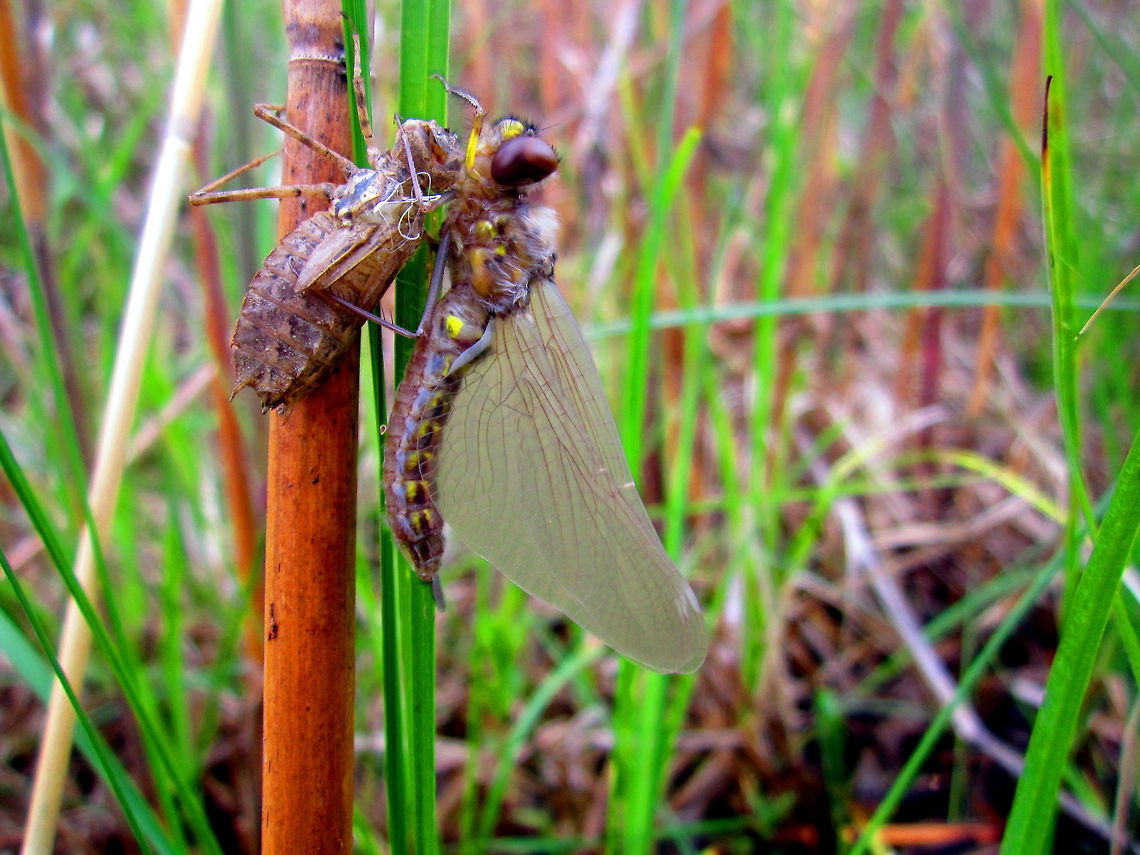
The brown Stream Cruiser can be recognized by its coloration and male cruising behavior along shores. The thorax has a single yellow stripe on each side. The yellow face has two black stripes across it. The eyes change from brown to green as the dragonfly matures. Each wing has a small brown spot at the base. The male abdomen is clubbed and bears distinctive yellow cerci (appendages at end of the abdomen).
Similar species: Dragonflies And Damselflies
By travismorhardt
All rights reserved
Uploaded Nov 15, 2013. Captured Jun 18, 2013 14:31 in Lake Upsilon Road, St. John, ND 58369, USA.


comments (10)
http://wiatri.net/inventory/odonata/SpeciesAccounts/SpeciesDetail.cfm?TaxaID=127
Posted 12 years ago
http://eol.org/pages/254564/names
Note the " Species 2000 & ITIS Catalogue of Life: April 2013" hierarchy, which is the dominant one in use on this site, or better said, on Wikipedia.
Which source do you use to think of the other family? Posted 12 years ago
This does come at the cost of scientific accuracy and integrity as you suggest, but there is a thought behind it. Have another look at that link and note how a single species is placed in 3 classifications. And that's not even a standard, some species are in way more classifications. Also note how each classification is tree has many more nodes than JungleDragon has, made of names not usable by non-scientists. And worse, for many species scientists cannot even agree on the classification within a single classification system.
The thought behind classification on JungleDragon is to provide a user friendly way to navigate the tree of life. To find related species to the one you're currently viewing, things like that. I want that tree to be accurate (within reason), after all ITIS is not "wrong", but above all I want it to be usable. And the way I see it, those two things are mutually exclusive. It's either user-friendly and somewhat accurate, or totally accurate and not usable.
Anyway, I just wanted to explain the thoughts behind it, as it is a very good question you're asking. Deep down I'm actually quite disappointed that science cannot even come up with a single system that works.
Posted 12 years ago, modified 12 years ago